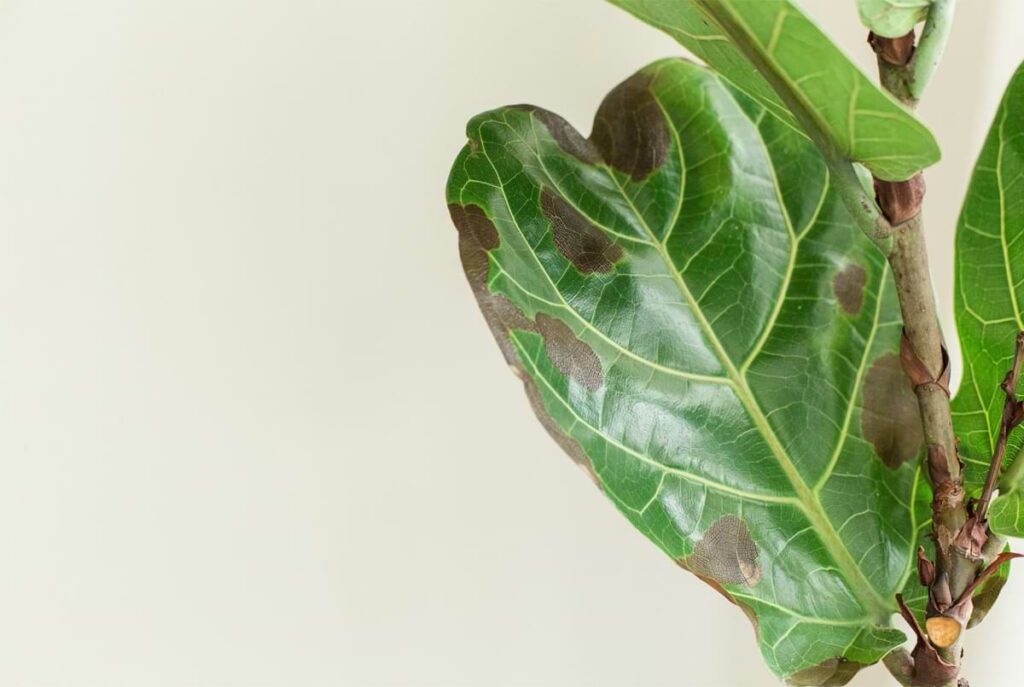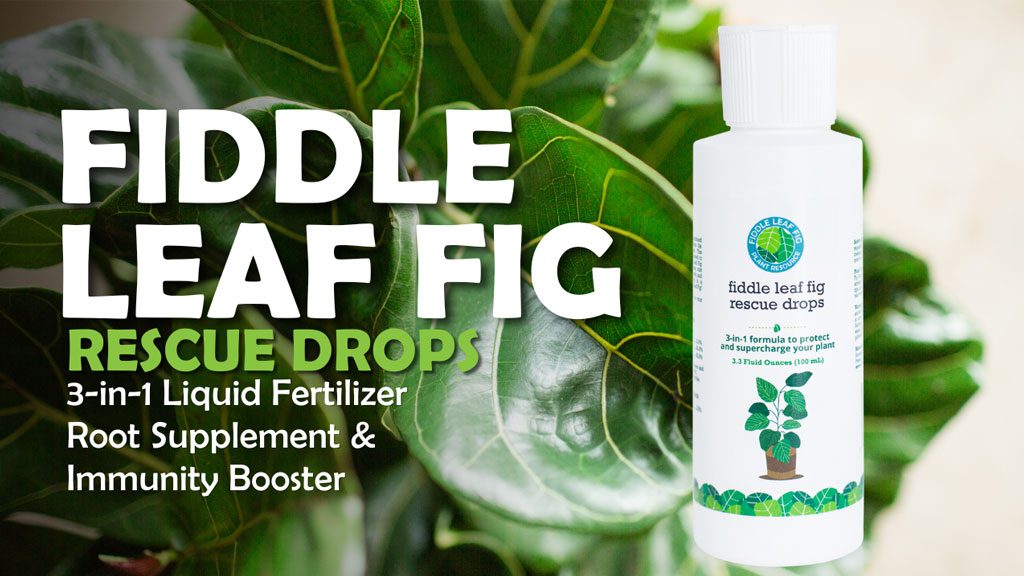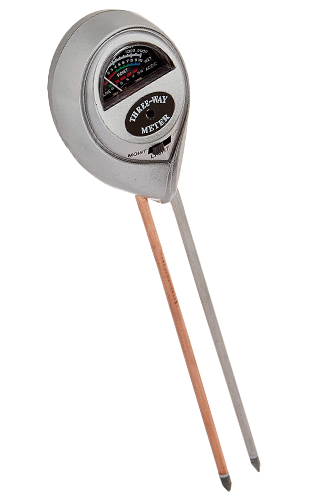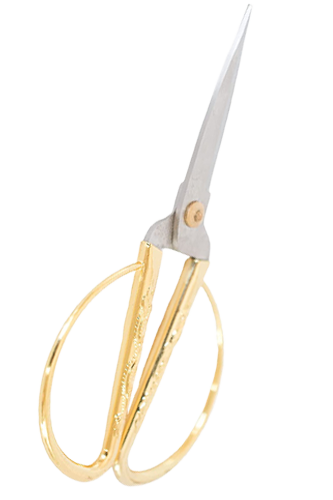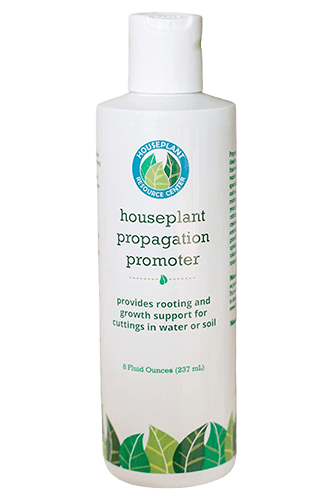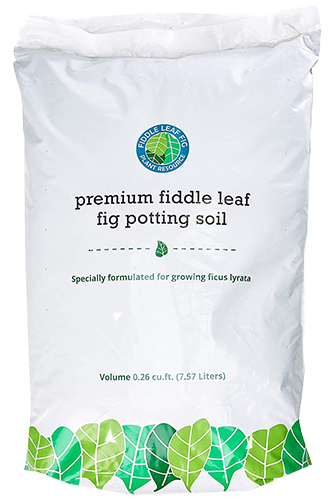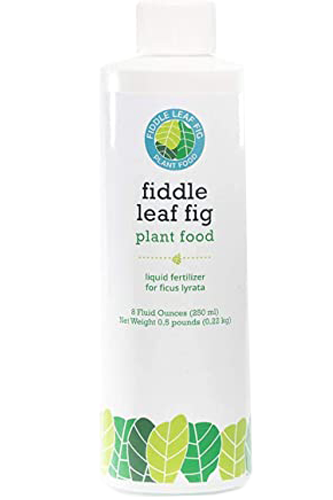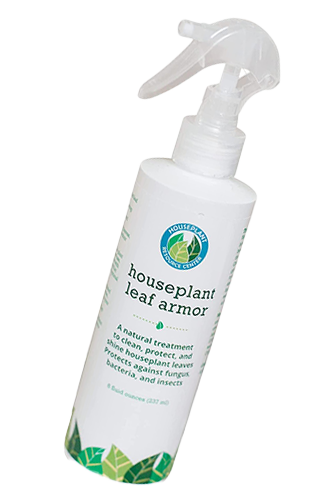The most common problem you’ll see on the discussion board of this site and in our Facebook group is root rot in fiddle leaf fig plants. It typically starts as brown spots on the leaves that begin spreading, before the leaves drop. Root rot is a serious problem in fiddle leaf figs that will kill the plant if it’s not treated quickly, so it’s important to act fast before your plant has suffered too much damage.
What Causes Root Rot?
Root rot is caused by too much moisture in the soil due to over-watering. Fiddle leaf fig roots need oxygen to live, they should be kept slightly moist but never wet. Many plant owners who are anxious to take good care of their new plants water them too often, causing the roots to sit in water and drown.
How to Diagnose Root Root in a Fiddle Leaf Fig
Even a fiddle leaf fig that appears to be relatively dry on the surface can be suffering from root rot underneath, depending on the type of soil, the size of the container, and the drainage. The only way to know for sure is to remove the root ball from the pot to inspect.

In this case, when we inspected the root ball of a fiddle leaf fig with signs of root rot, we found a soggy wet mess. You can see from these photos the classic symptoms of root rot on the leaves. The plant’s owner had also noticed the plant dropping several leaves. She wasn’t sure what was going on beneath the surface, so she took the plant out of its pot and inspected the roots.
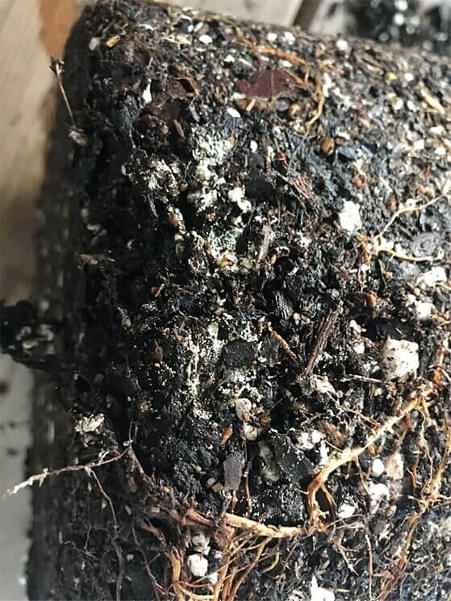
The root ball was completely wet, dripping water when she removed it from the pot. The drainage that she thought was adequate was not, even with a week between waterings, the soil was not drying out at all. Sections of the roots were brown and mushy, as the infection spread through the roots and up to the leaves of the plant.

How to Save Your Fiddle Leaf Fig From Root Rot
The best way to save your fiddle leaf fig from root rot is to recognize the signs quickly and act fast. Remove your plant from its pot and take a look at the root ball. Is it wet? Are the roots sitting in moisture? Are they turning brown and mushy? If so, you’ll want to take action.
Rinse off the root ball and inspect the roots. Remove any that are brown or mushy with a sharp pair of pruning shears like these. Then start from scratch with a container with excellent drainage and a fast-draining soil. Consider adding Houseplant Smart Gravel to the bottom of your container to improve the drainage and act as a ballast to keep your plant’s root ball dry.
Be sure to choose a container that isn’t too large for your plant. Large containers can retain too much water and take too long to dry out between waterings. The ideal container is just 4 to 6 inches larger in diameter than the container your plant arrived in.
You’ll also want to make sure that your plant is getting enough light. Even fiddle leaf figs that have adequate drainage can suffer from root rot if they’re not getting enough light.
Repot your fiddle leaf fig with fresh potting soil in the well-draining container. Then, water once and make sure the excess water is draining out of the bottom of the container. After that, wait. Do not water again until you’re sure the roots have had a chance to dry out.
It may be more than a week before the roots have a chance to dry, depending on the size of your plant, how much sunlight it gets, and the configuration of your container. You can use a moisture meter like this one to check the bottom of the root ball to see how wet it is. Don’t water until you get a reading of 4 or lower at the root level.
Resume watering once a week or less and your plant should stabilize. You can remove the damaged leaves with sharp pruning shears, taking care not to remove more than 10% of the total leaves at once. Given enough time and TLC, your plant can make a full recovery.
If your fiddle leaf fig still needs help or you would like to protect it in the future, we’ve spent over a year creating a treatment to protect your plant from root rot infections. Our Root Rot Treatment is a natural plant bio-stimulator, enhancing your plant’s existing immune response and promoting growth.
It was designed with input from microbiologists, fiddle leaf fig growers, and botanists. It provides protection against the common Pythium, Pphytophthora, and pseudo-fungi that cause root rot in fiddle leaf figs. It’s gentle and safe for your plant, designed to be used every time you water, along with fiddle leaf fig plant food. Get yours today on Amazon.
Watch a helpful video on how to treat and prevent root rot in fiddle leaf fig trees by clicking here.
Tip: Try our Houseplant Leaf Armor, designed to protect your plant against insects, bacteria, and fungus. (As an added bonus, it also cleans and adds shine to your plant’s leaves!)
Fungal Root Rot Case Study
Watch as I diagnose a reader’s fiddle leaf fig with fungal root rot. See the photos of the plant and learn more about the steps she can take to save her plant.
To learn more:
- Sign up for our free Fiddle Leaf Fig Care 101 Webinar for advanced fiddle leaf fig care.
- Subscribe to our newsletter today!
- Order our Fiddle Leaf Fig Plant Food, Premium Fiddle Leaf Fig Potting Soil, and Root Rot Treatment here!
- Click to join our community on Facebook: Fiddle Leaf Fig Plant Resource Group.
- Read The Fiddle Leaf Fig Expert, your complete guide to growing healthy fiddle leaf fig plants. The book is available in full-color paperback or Kindle edition on Amazon now!

